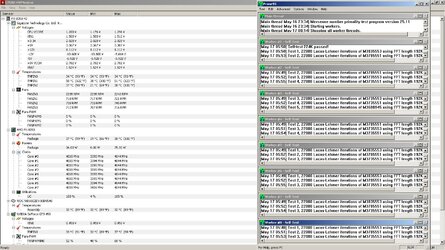- Joined
- Jan 1, 2008
- Location
- Colorado Springs, CO
Hey everyone,
I am not much of a writer, but here goes:
Yesterday I picked up a Gigabyte GA-990FXA-UD5 R5 with an FX-8320e from Microcenter. Total cost before tax was roughly $230 usd. Not too shabby. I'll give a quick rundown of my feelings towards this board:
System hardware used:
AMD FX-8320E
Gigabyte GA-990FXA-UD5 R5
8 gigs Gskill Sniper 1866 (@1866)
Samsung 830 256gb SSD
Corsair H80 AIO cooler
Antec HCG-750 PSU
Antec ThreeHundred Case (original)
Windows 7
1. Upon unboxing, you can feel it is a solid board. Some decent heft to it. Compared to my old Asus M5A97 (R1.0, vanilla as I call it, non-pro or evo), its mass is significantly greater. Right off the bat, during install I was happy it was a full ATX board, compared to the shortened ATX board that the M5A97 was (did not extend to the third screw holes).
2. Bios/UEFI: Overall, it has everything you need for a decent overclock. Very easy to use UEFI. I actually did not have to look anything up in the manual to figure out what that knob was for. LLC for the vcore, multipliers etc... but there are a few detractors here:
-Voltages are ONLY set via offset. Not the end of the world, especially when OCing. The inital settings can be annoying, mostly cause math is involved, and that is not as much fun as seeing the dials turn with the knobs
-Voltage tweaks: LLC settings are pretty decent, (auto, regular, normal, medium, high, ultra high, ultimate). Overall, they work. Downside is who named these? I feel like the settings would be better served with % numbers versus
confusing naming. There was not some more advanced controls, such as LLC for CPU/NB, or Over-current settings (such as the Crossblade Ranger has).
-I used the AISuite pretty extensively for dialing in my OC between crashes. Easy Tune seems terrible, and only seemed to contribute to instability. Luckly, AMD OverDrive can easily adjust multipliers between crashes and works well
for this purpose.
-I use WOL (wake on LAN) pretty heavily. That and VNC. Want to download a steam game before you get home? VPN into your own network, WOL the desktop, login from VNC and start the download, all from your smartphone. Well
well I cannot find a WOL setting. Maybe its set already, without the option to turn it off? I'll find out once I move off Win7 to Win10. From my experience Win7 does not play nice with WOL from a cold shutdown.
3. Overclocking: Again, I am pretty happy with this board. I have my poor old H80 cooler choking down this FX-8XXX @ 4.5ghz. It works, and best of all, is less painful than my old M5A97 ON/OFF/AUTO LLC board was. The VRM/NB sink does get fairly warm to the touch, but not burning nor painfull. I'll attach some screenshots from my overclocking foray below.
4. Features:
-A) Audio: leaps and bounds better than my M5A97. The onboard audio is strong enough to drive my CM Storm Sirus headset (4 drivers each ear) well. It sounds decent, without having to run the USB CM Storm software which is a
plus.
-B) Utilities: We already know about my opinion of the N Tune utility. I'll say it again for emphasis: CRAP. I honestly have not tried the network manager utility, as I really don't need it. My router does all that for me. Or my Cisco
switch. Speaking of which, its hard to leave enterprise grade gear when you have so much flexability with it. But that is another post
-C) Onboard lan: no complaints. Runs at 1000BaseT as it is supposed to.
-D) USB 3: no idea, I don't have a drive to test it, nor would I really care that much.
5. Overall:
Decent board. I paid $110 for it with the Microcenter processor purchase discount. It works (which is usually good). It overclocks (which is why I bought it in the first place). It is missing alot of knobs, but TBH, if you spend time on lesser than the top tier boards (CHV, Saberkitty, etc), you would completely understand that those 'features' the UD5 R5 is missing are actually really not required for a decent overclock. They may be needed for high end overclocking by far, and I do miss some of the features my Crossblade Ranger had (FM2+ board). The knobs are nice, and they turn dials in UEFI/BIOS. Good stuff. I got what I was aiming for, 4.5ghz on an 8-core, without killing my poor H80, and without breaking the bank. YMMV, but overall my experience has been pleasant with this board.
Bottom Line:
Pros:
-Decent board for the cost, especially if on sale or combined with other discounts
-Solid VRM section for overclocking
-Easy to use UEFI/BIOS
Cons:
-Not a Saberkitty/CHV, missing many knobs
-Voltage controls work, but lack in UEFI feedback.
-N Tune is a turd.
Bottom-line, my opinion is that it is a decent board, with better features than the various 970 boards you can get. If you cannot grab one on sale, or at a discount, I would recommend another board as its MSRP is rather high.



















Edit: so I have revisited the Gigabyte software on windows 10. The fab control software is much better, as are the other features (when installed with the Gigabyte APP software). Much happier with the software now that I can better tame my noctua iPPC-3000 fans! If you have one of the R5 boards on windows 10, it's worth a try to revisit the software.
Edit again: Uploaded some additional screenshots of the newer Gigabyte APP center. This is a modular system, and you can choose which parts to install. I have installed everything but the Cloud Server and Cloud software (allows remote access to machine, as well as some n-tune controls via phone app). Overall, the fan control software is MUCH better, allowing a curve to be created. I did have to compromise some as you cannot add extra points, but it worked well enough for how I wanted to set my jet-engine fans in my new case (NZXT S340 w/ 2 140mm Noctura iPPC-3000 fans for intake). Below are the screen shots:




I am not much of a writer, but here goes:
Yesterday I picked up a Gigabyte GA-990FXA-UD5 R5 with an FX-8320e from Microcenter. Total cost before tax was roughly $230 usd. Not too shabby. I'll give a quick rundown of my feelings towards this board:
System hardware used:
AMD FX-8320E
Gigabyte GA-990FXA-UD5 R5
8 gigs Gskill Sniper 1866 (@1866)
Samsung 830 256gb SSD
Corsair H80 AIO cooler
Antec HCG-750 PSU
Antec ThreeHundred Case (original)
Windows 7
1. Upon unboxing, you can feel it is a solid board. Some decent heft to it. Compared to my old Asus M5A97 (R1.0, vanilla as I call it, non-pro or evo), its mass is significantly greater. Right off the bat, during install I was happy it was a full ATX board, compared to the shortened ATX board that the M5A97 was (did not extend to the third screw holes).
2. Bios/UEFI: Overall, it has everything you need for a decent overclock. Very easy to use UEFI. I actually did not have to look anything up in the manual to figure out what that knob was for. LLC for the vcore, multipliers etc... but there are a few detractors here:
-Voltages are ONLY set via offset. Not the end of the world, especially when OCing. The inital settings can be annoying, mostly cause math is involved, and that is not as much fun as seeing the dials turn with the knobs
-Voltage tweaks: LLC settings are pretty decent, (auto, regular, normal, medium, high, ultra high, ultimate). Overall, they work. Downside is who named these? I feel like the settings would be better served with % numbers versus
confusing naming. There was not some more advanced controls, such as LLC for CPU/NB, or Over-current settings (such as the Crossblade Ranger has).
-I used the AISuite pretty extensively for dialing in my OC between crashes. Easy Tune seems terrible, and only seemed to contribute to instability. Luckly, AMD OverDrive can easily adjust multipliers between crashes and works well
for this purpose.
-I use WOL (wake on LAN) pretty heavily. That and VNC. Want to download a steam game before you get home? VPN into your own network, WOL the desktop, login from VNC and start the download, all from your smartphone. Well
well I cannot find a WOL setting. Maybe its set already, without the option to turn it off? I'll find out once I move off Win7 to Win10. From my experience Win7 does not play nice with WOL from a cold shutdown.
3. Overclocking: Again, I am pretty happy with this board. I have my poor old H80 cooler choking down this FX-8XXX @ 4.5ghz. It works, and best of all, is less painful than my old M5A97 ON/OFF/AUTO LLC board was. The VRM/NB sink does get fairly warm to the touch, but not burning nor painfull. I'll attach some screenshots from my overclocking foray below.
4. Features:
-A) Audio: leaps and bounds better than my M5A97. The onboard audio is strong enough to drive my CM Storm Sirus headset (4 drivers each ear) well. It sounds decent, without having to run the USB CM Storm software which is a
plus.
-B) Utilities: We already know about my opinion of the N Tune utility. I'll say it again for emphasis: CRAP. I honestly have not tried the network manager utility, as I really don't need it. My router does all that for me. Or my Cisco
switch. Speaking of which, its hard to leave enterprise grade gear when you have so much flexability with it. But that is another post
-C) Onboard lan: no complaints. Runs at 1000BaseT as it is supposed to.
-D) USB 3: no idea, I don't have a drive to test it, nor would I really care that much.
5. Overall:
Decent board. I paid $110 for it with the Microcenter processor purchase discount. It works (which is usually good). It overclocks (which is why I bought it in the first place). It is missing alot of knobs, but TBH, if you spend time on lesser than the top tier boards (CHV, Saberkitty, etc), you would completely understand that those 'features' the UD5 R5 is missing are actually really not required for a decent overclock. They may be needed for high end overclocking by far, and I do miss some of the features my Crossblade Ranger had (FM2+ board). The knobs are nice, and they turn dials in UEFI/BIOS. Good stuff. I got what I was aiming for, 4.5ghz on an 8-core, without killing my poor H80, and without breaking the bank. YMMV, but overall my experience has been pleasant with this board.
Bottom Line:
Pros:
-Decent board for the cost, especially if on sale or combined with other discounts
-Solid VRM section for overclocking
-Easy to use UEFI/BIOS
Cons:
-Not a Saberkitty/CHV, missing many knobs
-Voltage controls work, but lack in UEFI feedback.
-N Tune is a turd.
Bottom-line, my opinion is that it is a decent board, with better features than the various 970 boards you can get. If you cannot grab one on sale, or at a discount, I would recommend another board as its MSRP is rather high.
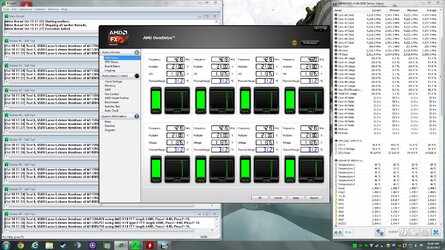
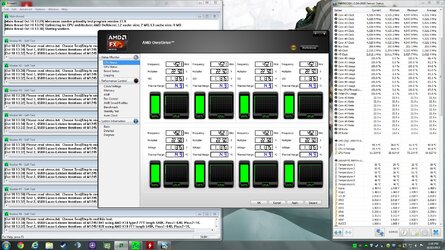


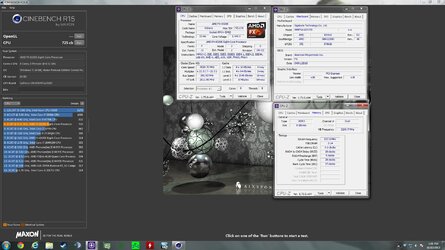
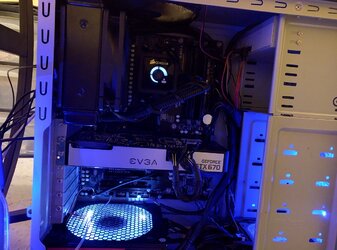
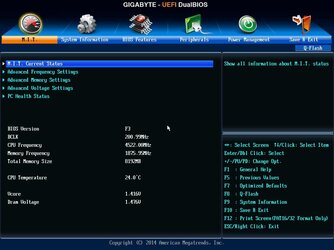
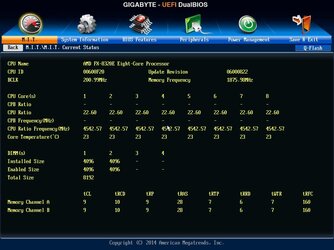
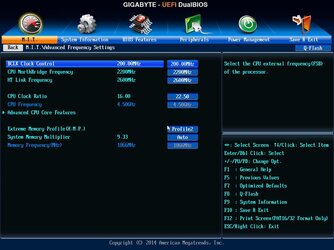
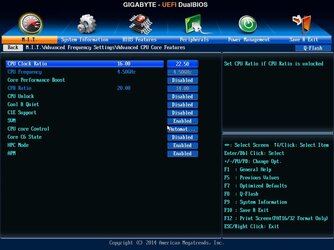
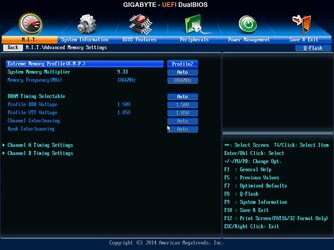
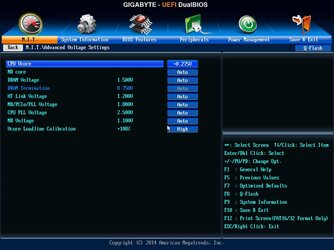
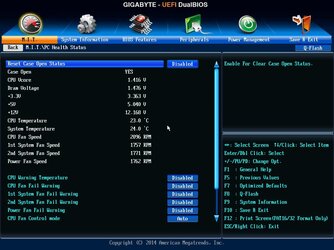
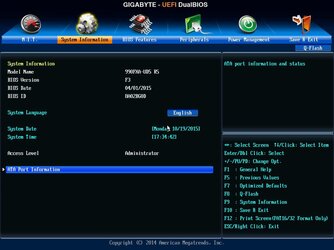
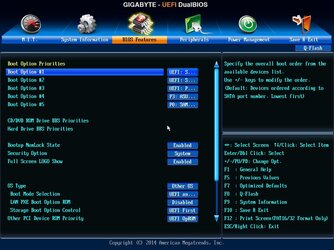
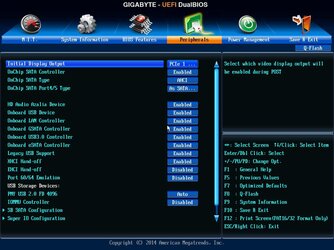
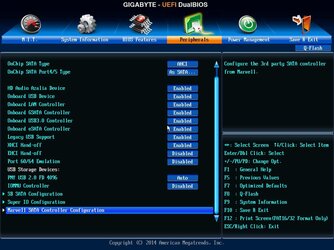
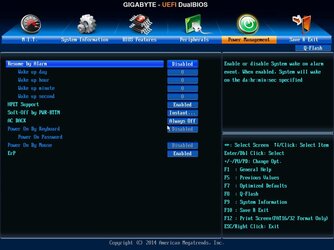
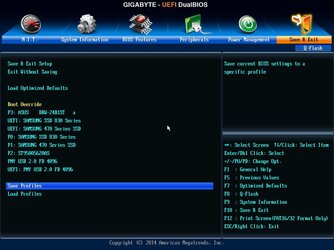
Edit: so I have revisited the Gigabyte software on windows 10. The fab control software is much better, as are the other features (when installed with the Gigabyte APP software). Much happier with the software now that I can better tame my noctua iPPC-3000 fans! If you have one of the R5 boards on windows 10, it's worth a try to revisit the software.
Edit again: Uploaded some additional screenshots of the newer Gigabyte APP center. This is a modular system, and you can choose which parts to install. I have installed everything but the Cloud Server and Cloud software (allows remote access to machine, as well as some n-tune controls via phone app). Overall, the fan control software is MUCH better, allowing a curve to be created. I did have to compromise some as you cannot add extra points, but it worked well enough for how I wanted to set my jet-engine fans in my new case (NZXT S340 w/ 2 140mm Noctura iPPC-3000 fans for intake). Below are the screen shots:
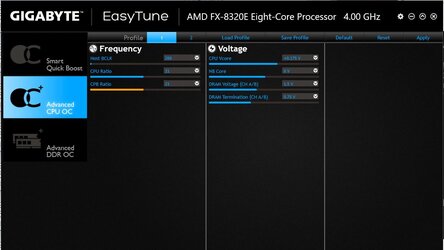
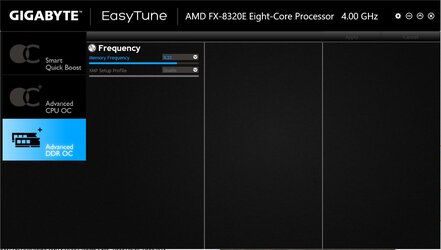
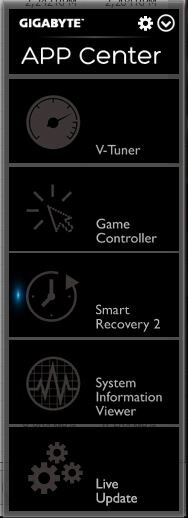
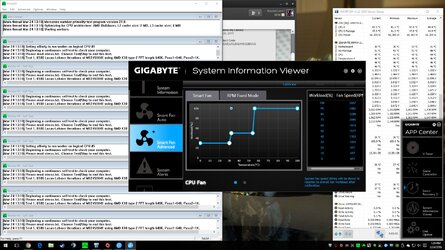
Last edited:

